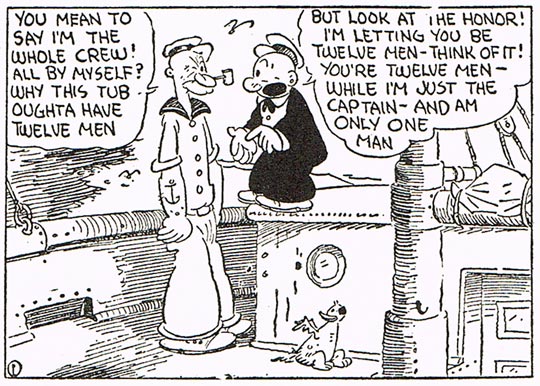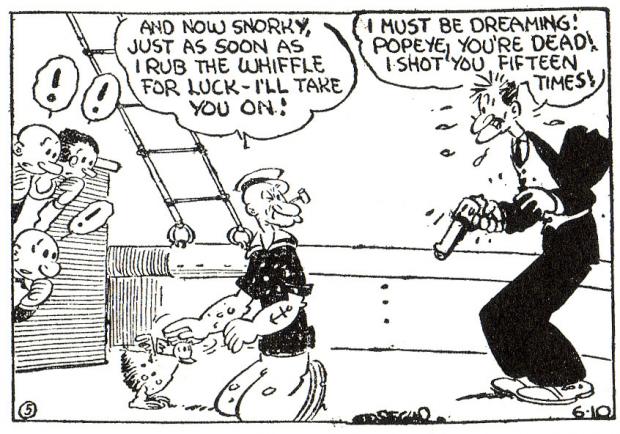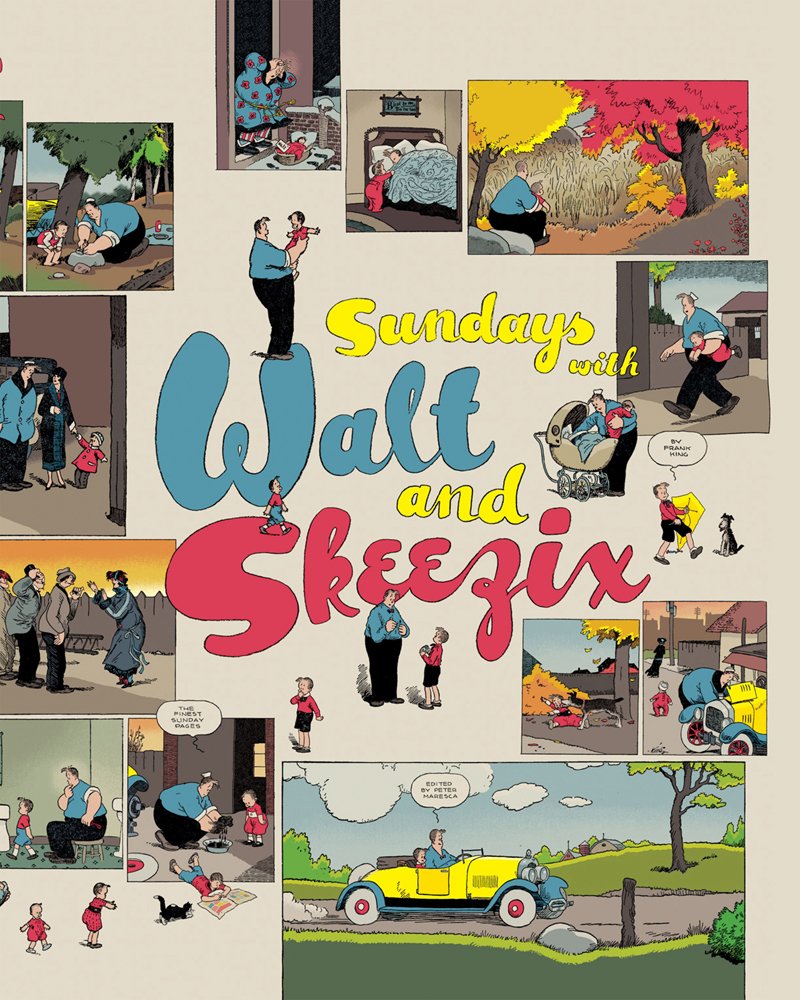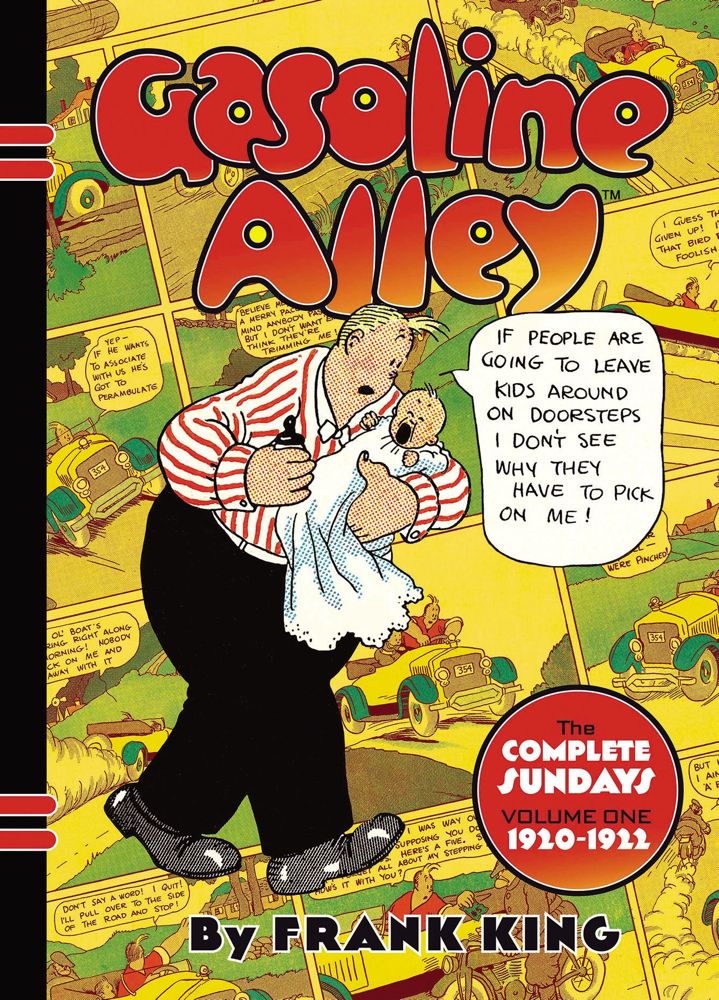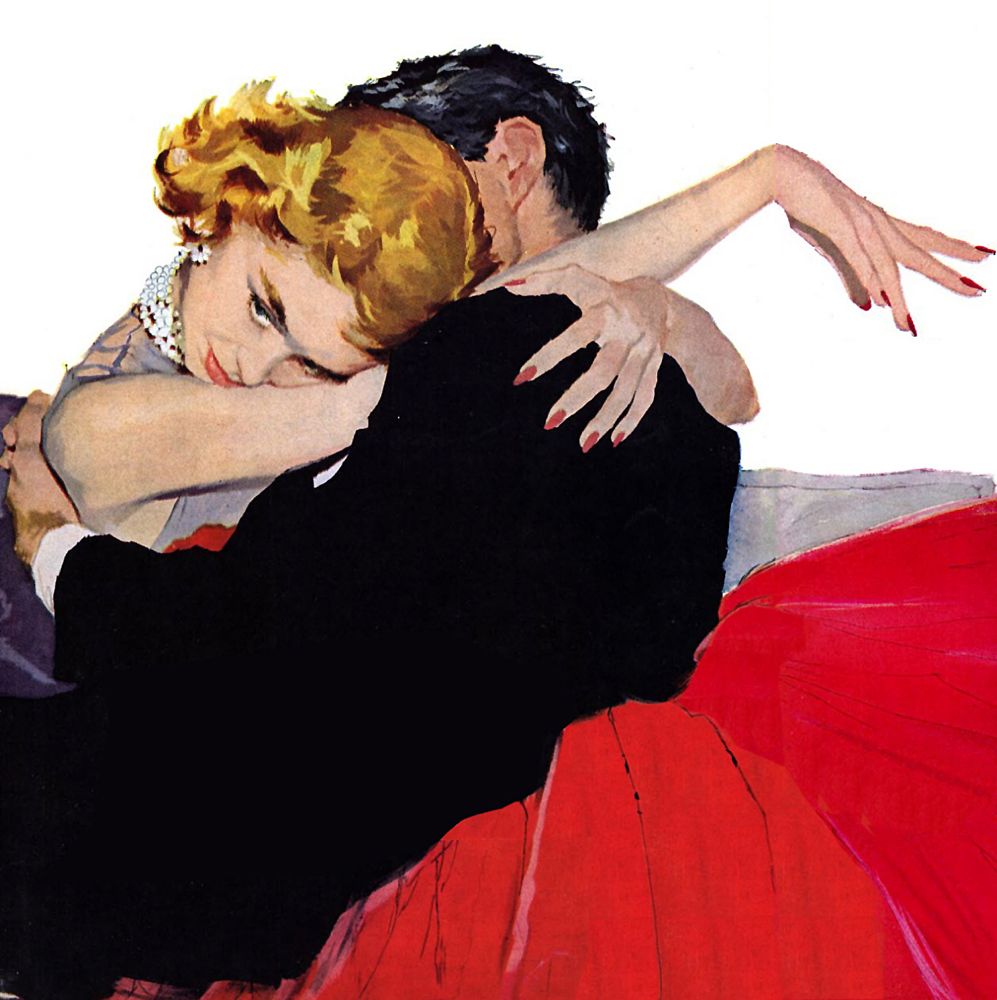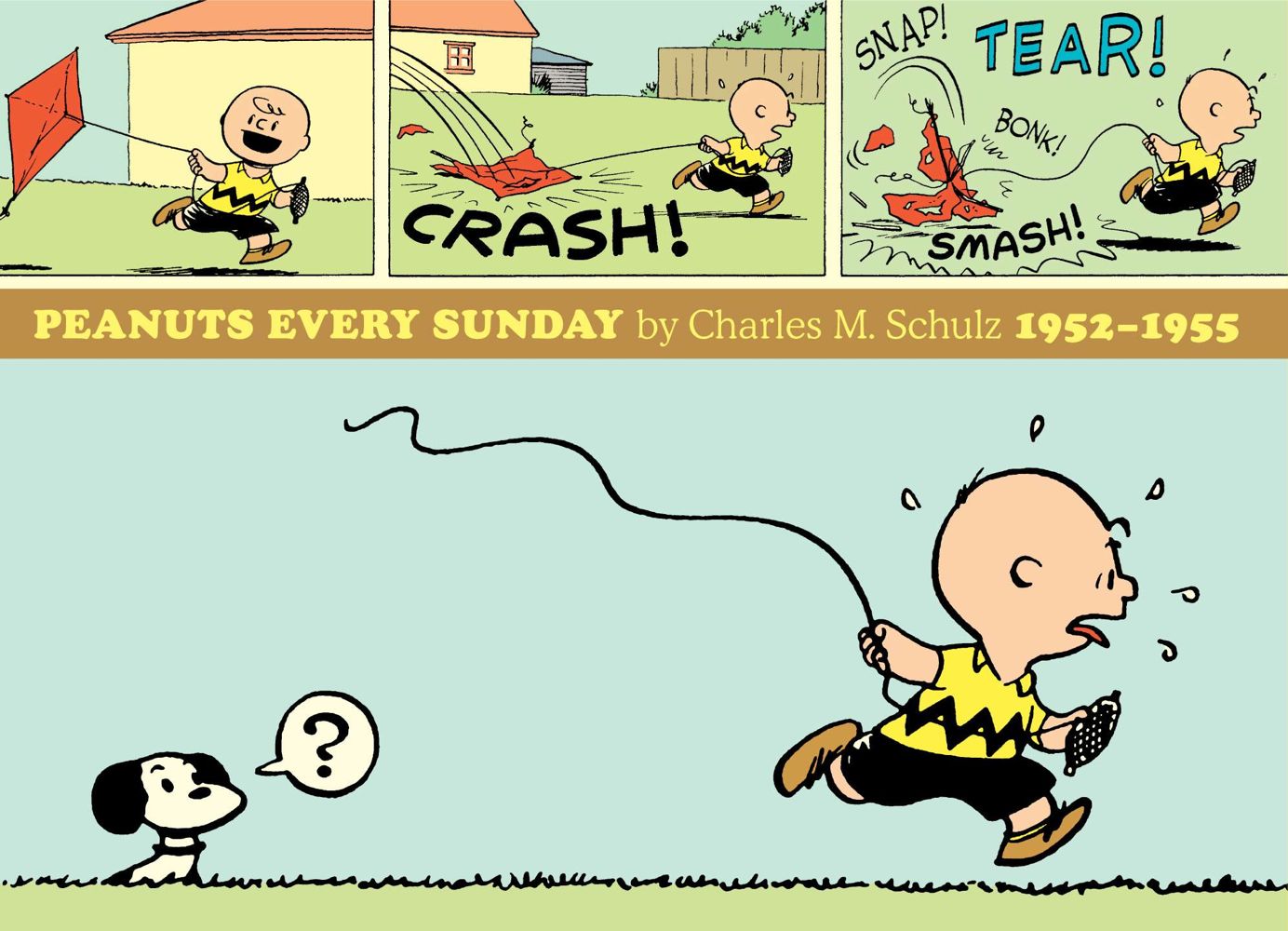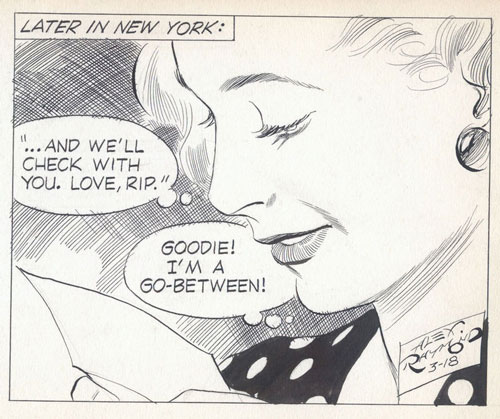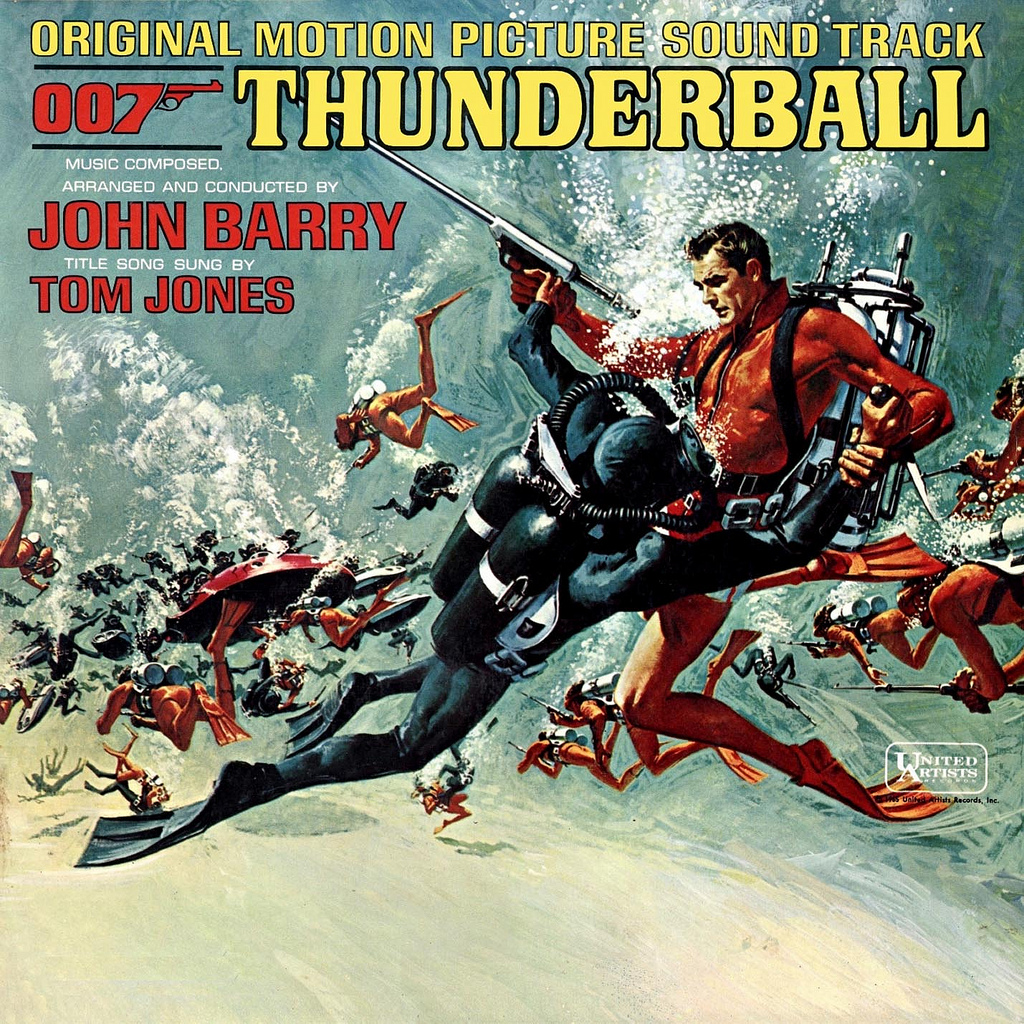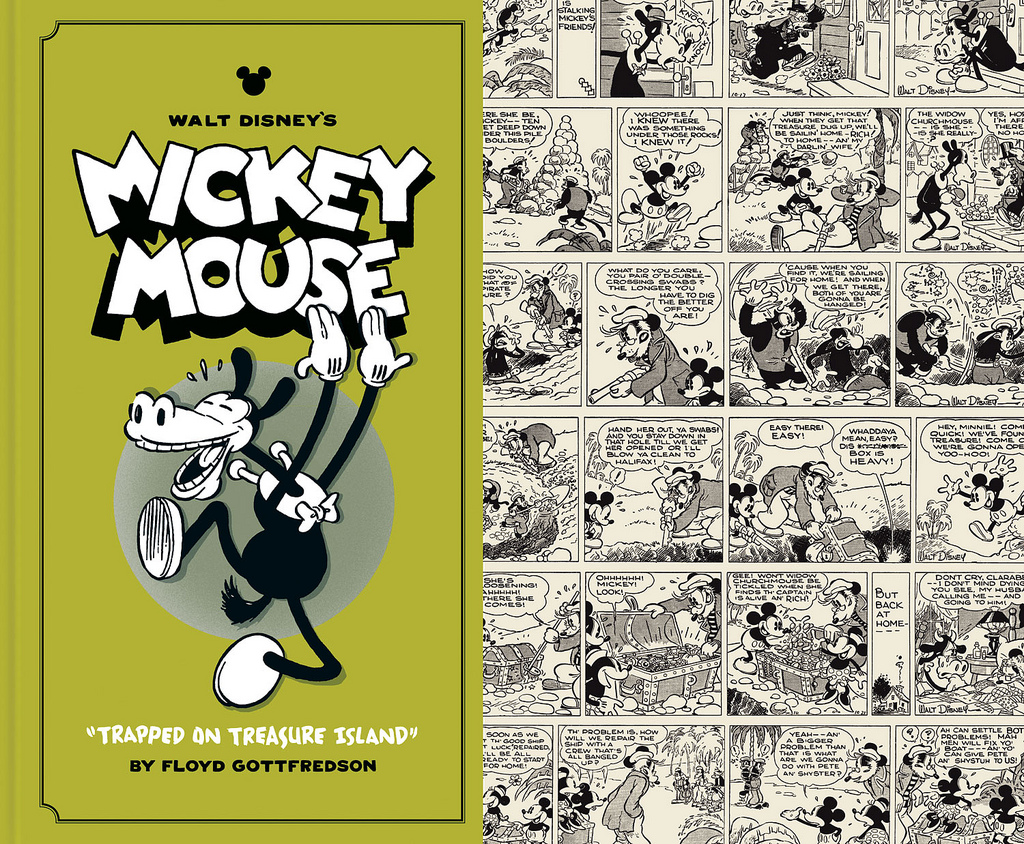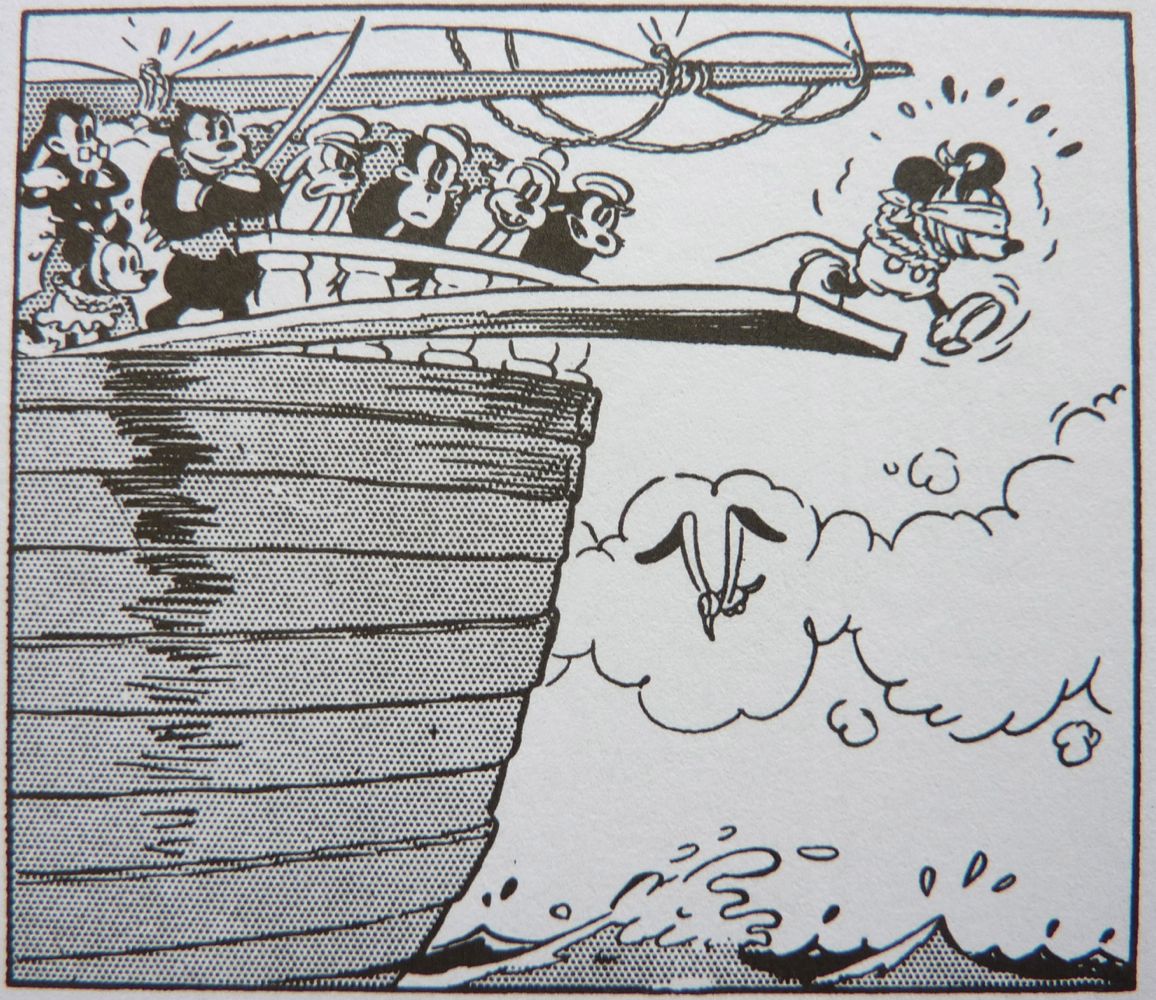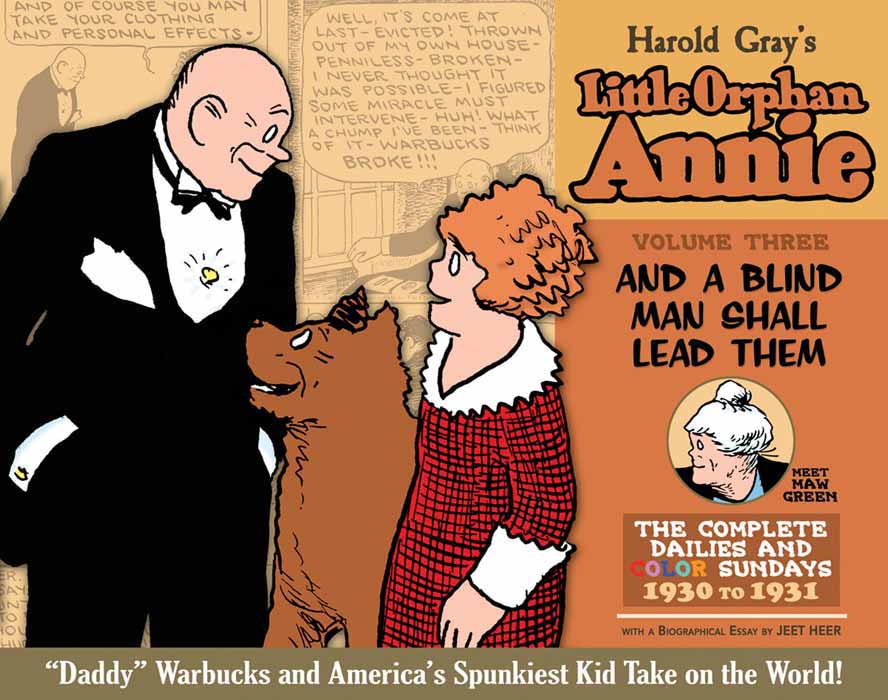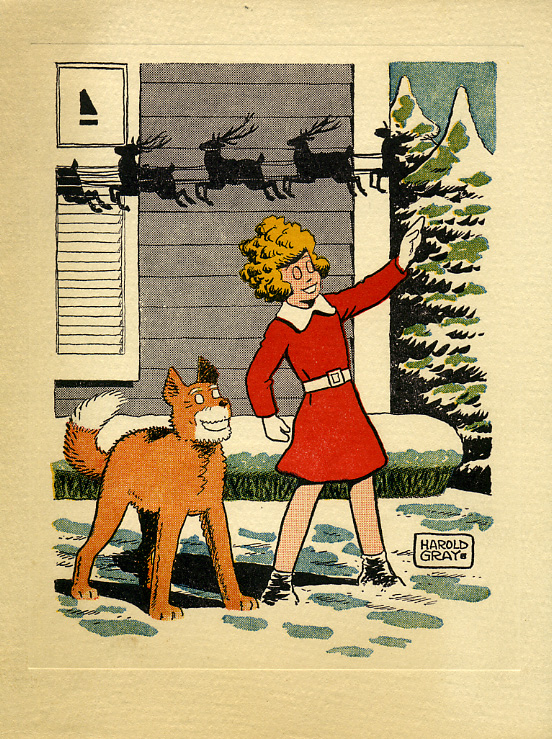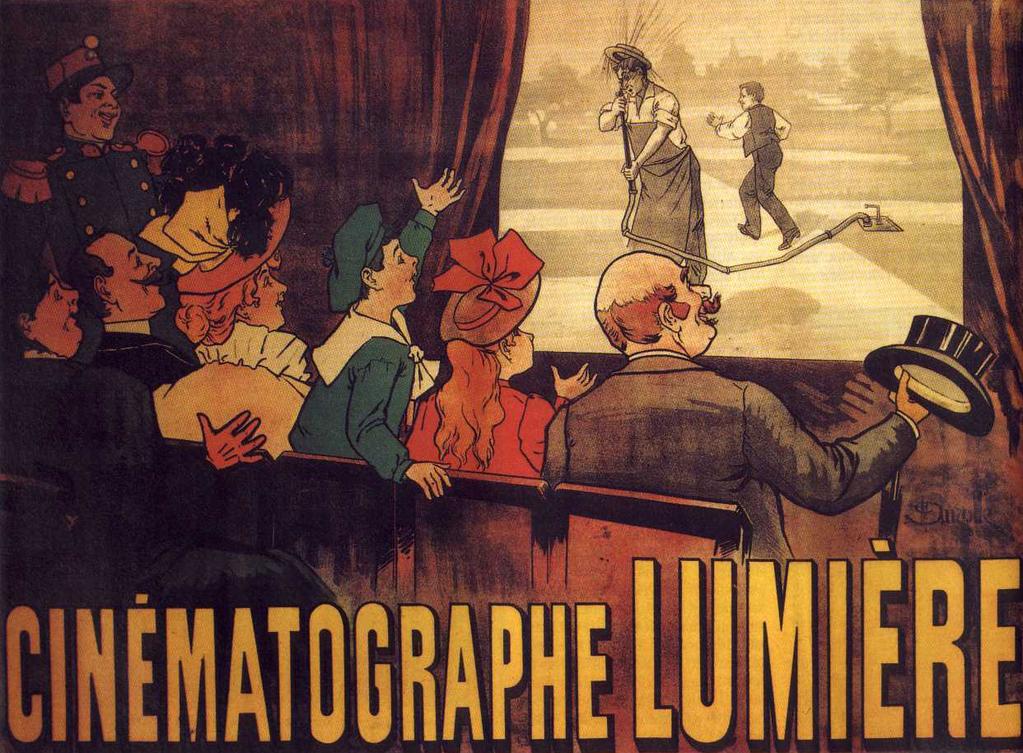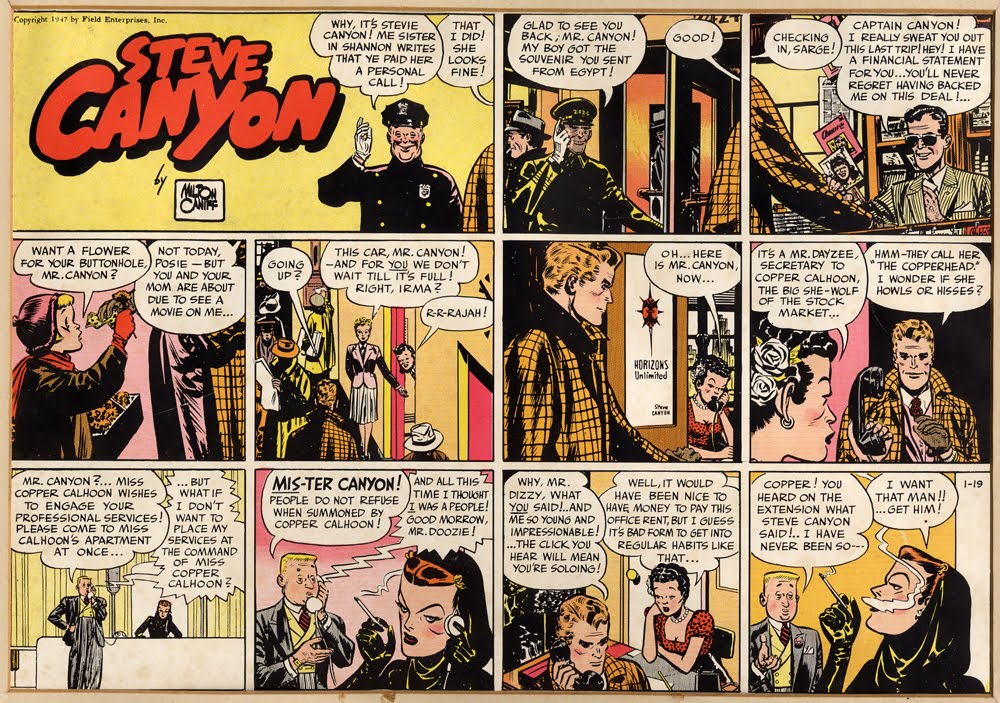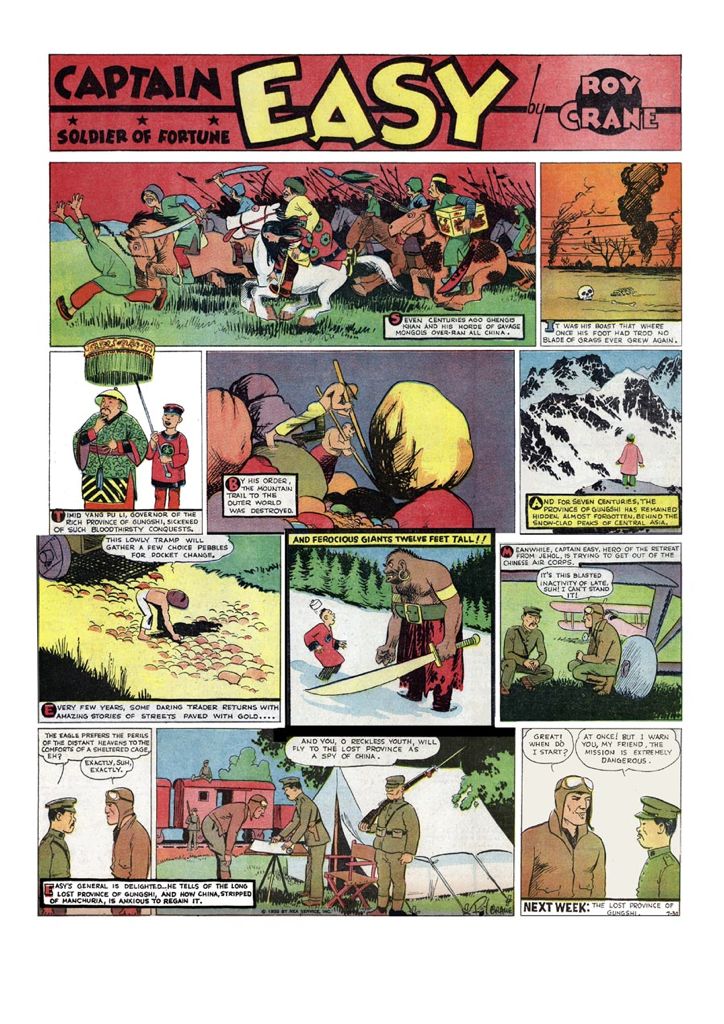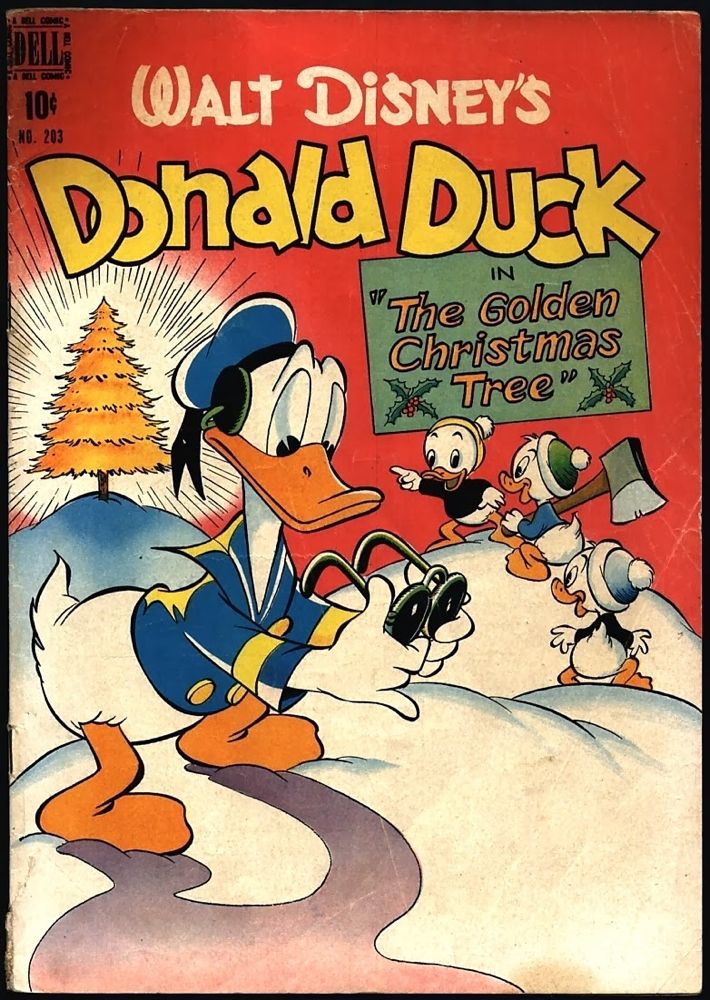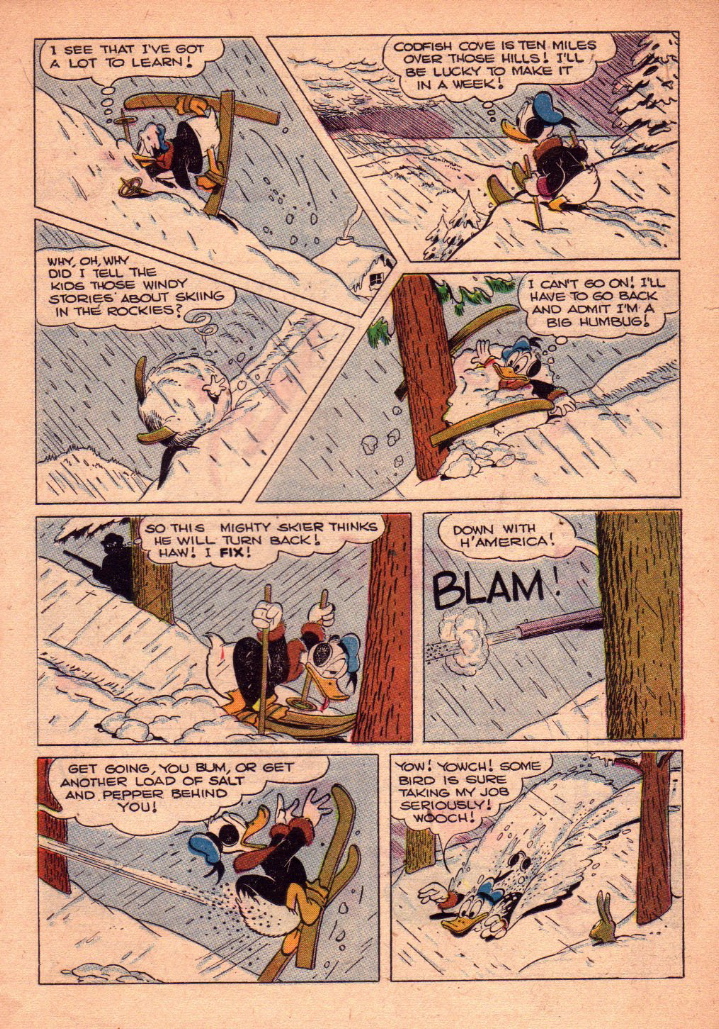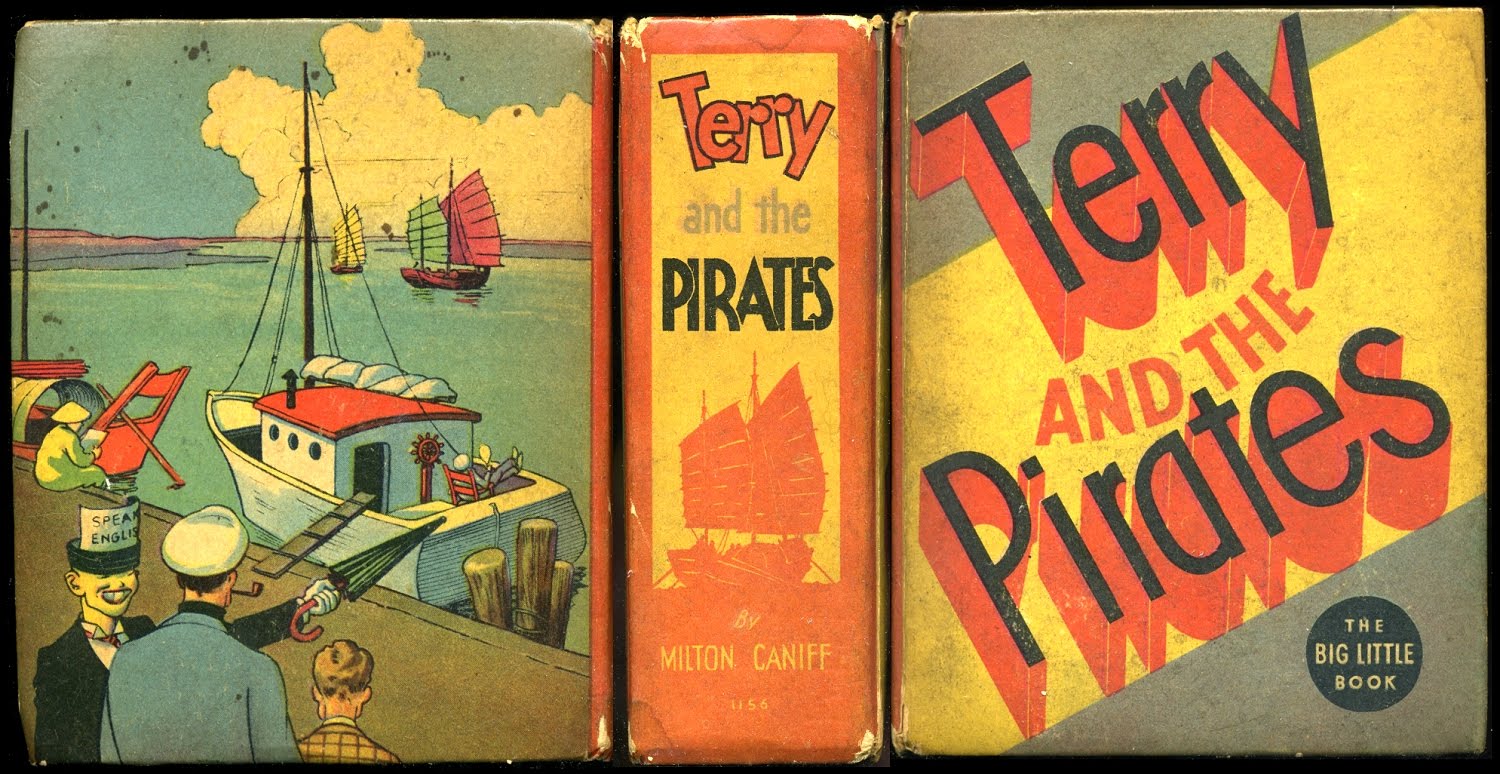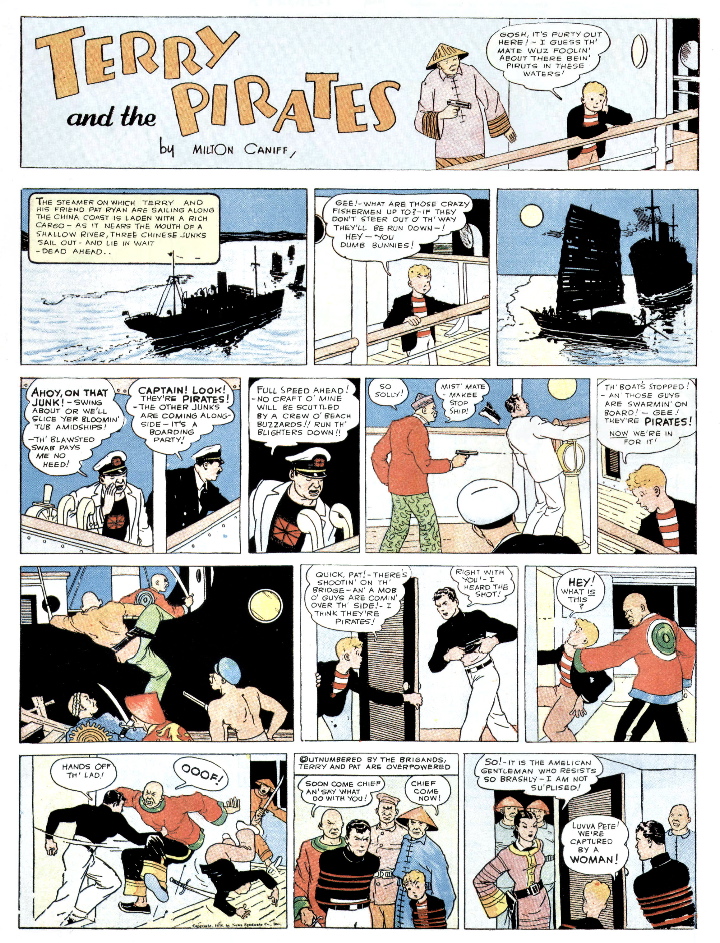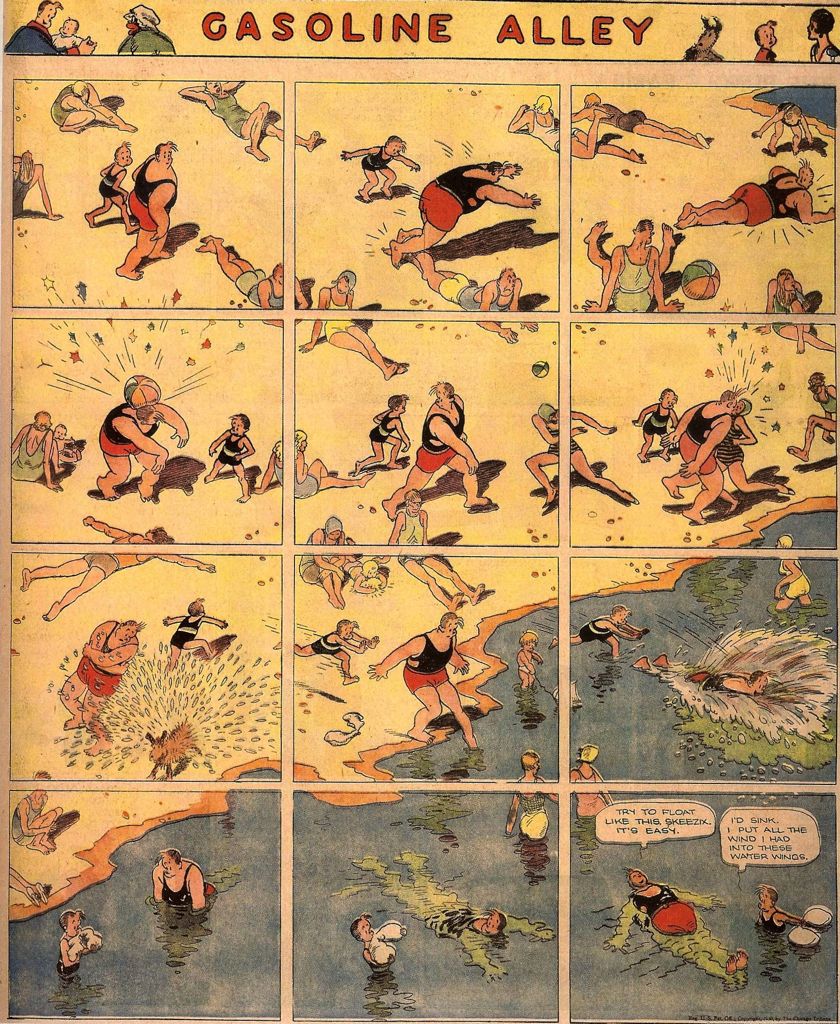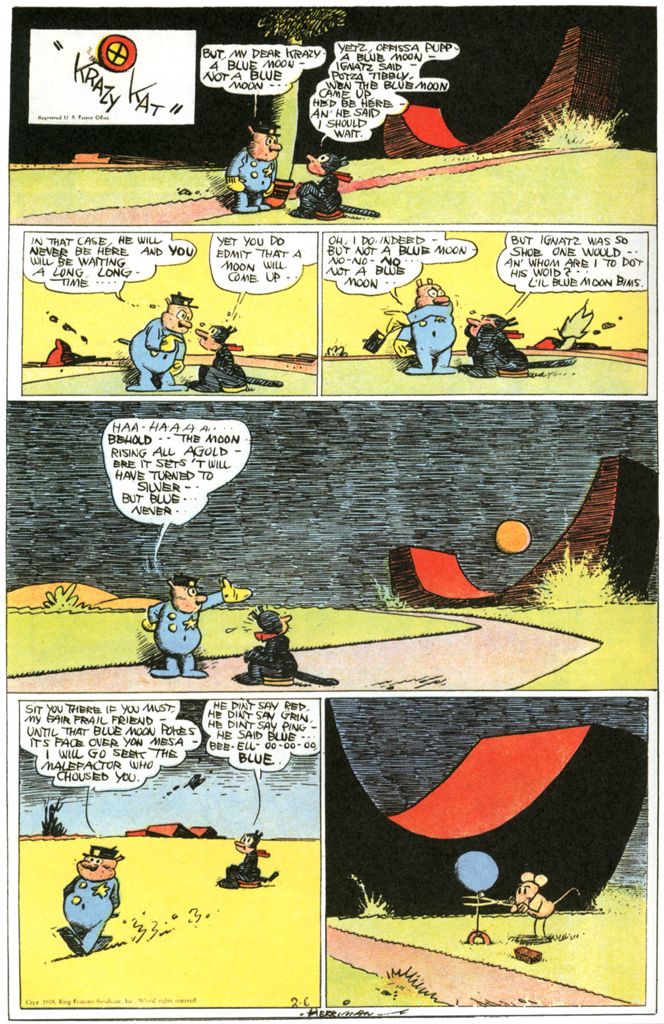
Many people consider this series the pinnacle of comic strip art, and it’s hard to argue with the proposition. George Herriman had a distinctive and brilliant visual style — the lines of his drawings are alive with an electric energy you find only in the work of the greatest graphic artists, from Rembrandt to Callot to Steinberg..
Herriman created a world based on the landscapes of the American Southwest, often referencing the area in and around around Monument Valley, and sometimes distorting its unusual natural features into purely abstract forms. (Cartoonists and painters discovered Monument Valley long before John Ford turned it into an iconic setting for Western movies.)
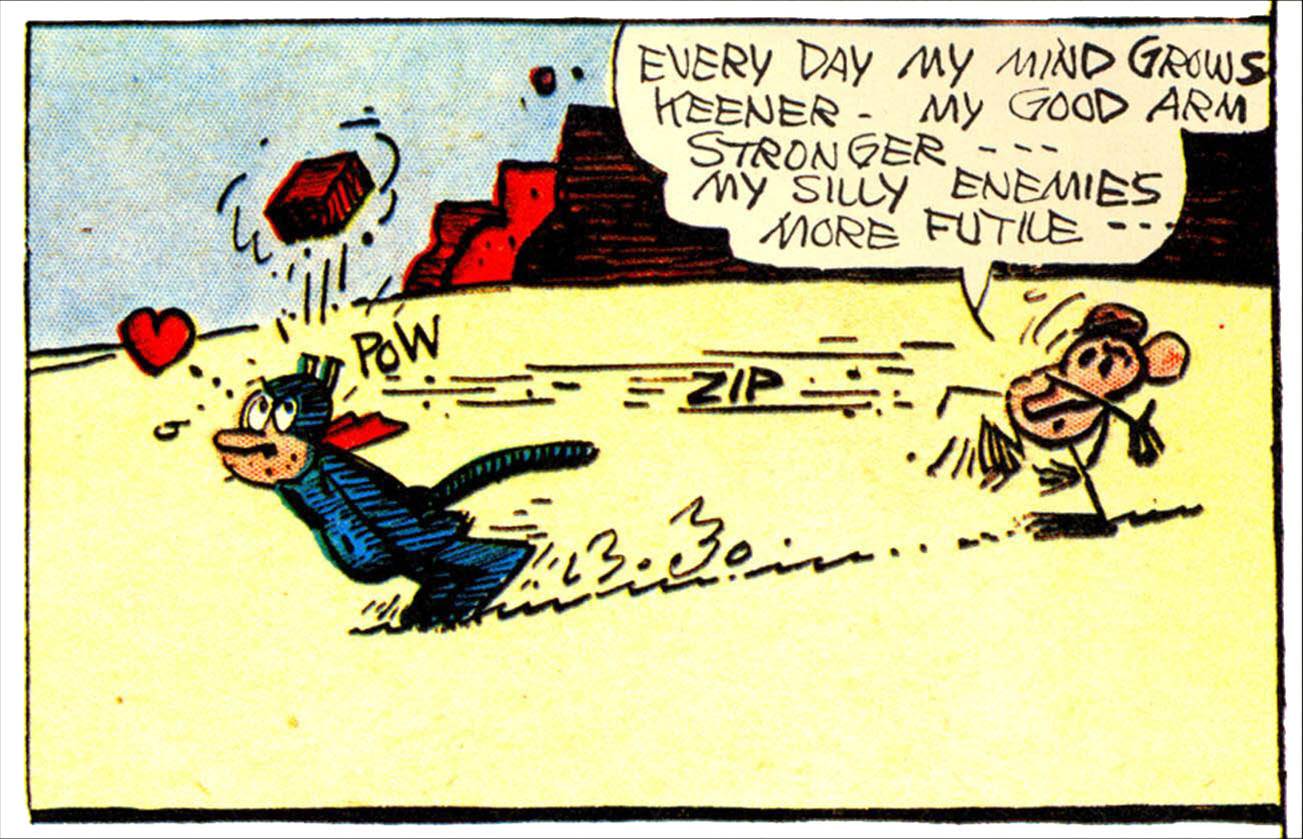
In Herriman’s dreamlike Southwest he conjured up a kind of mythic love triangle between three anthropomorphized animals — Krazy, a cat, Ignatz, a mouse, and Officer Pupp, a dog. Krazy loves Ignatz, Ignatz cares only for bashing Krazy with bricks (which Krazy insists on seeing as a sign of affection), and Pupp lives only to protect the innocent Krazy and bring Ignatz to justice.
The dynamics of the triangle never change – they’re played out in endless variations over decades, as other anthropomorphized animals in the community look on, pursuing their own quirky business on the fringes of the central drama.
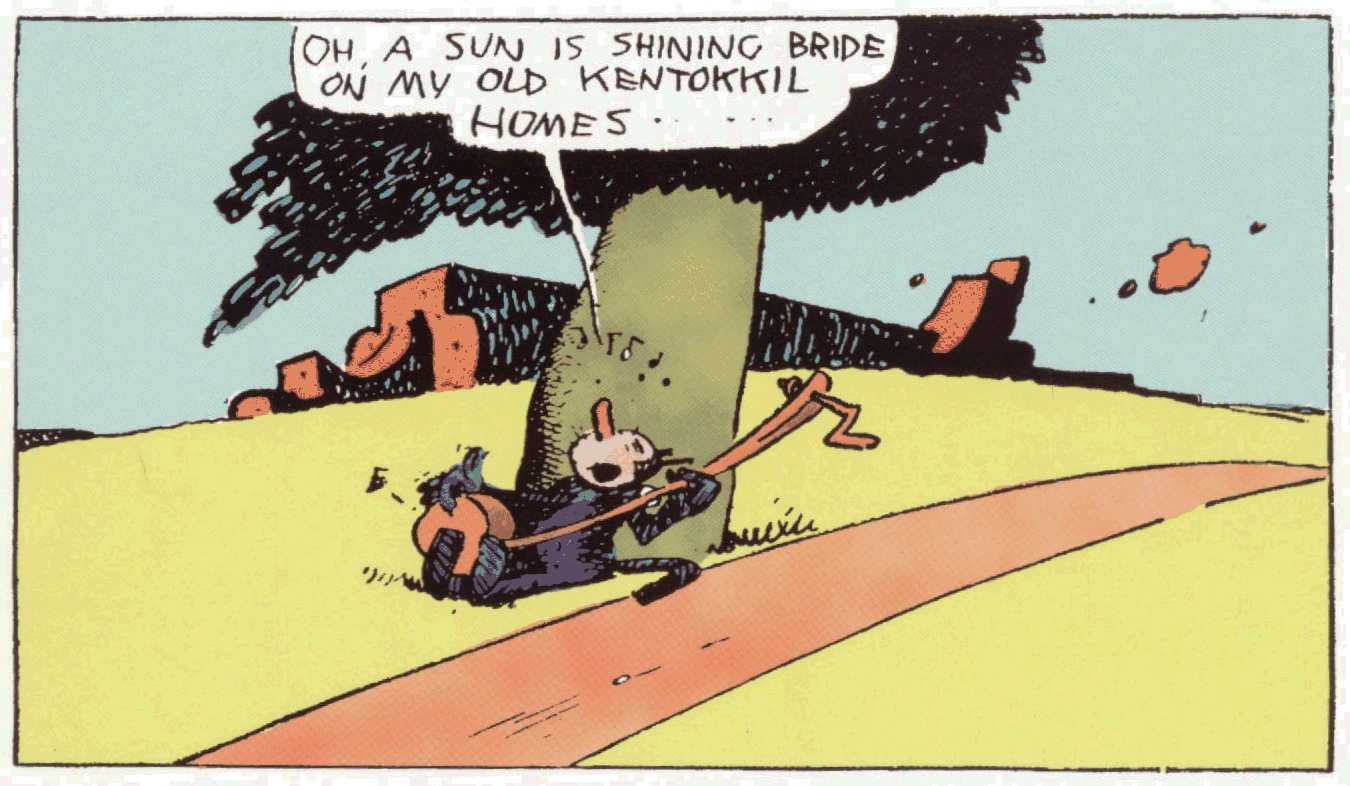
It’s all very strange, and wonderful. Motives are never quite spelled out — it isn’t even clear if Krazy is male or female. He or she is sweetly philosophical, in an optimistic vein, about everything that happens. Ignatz’s unwavering determination to hit Krazy with bricks takes on a kind of heroic dimension, and Pupp’s admirable but hopeless pursuit of justice becomes comical, almost pathetic.
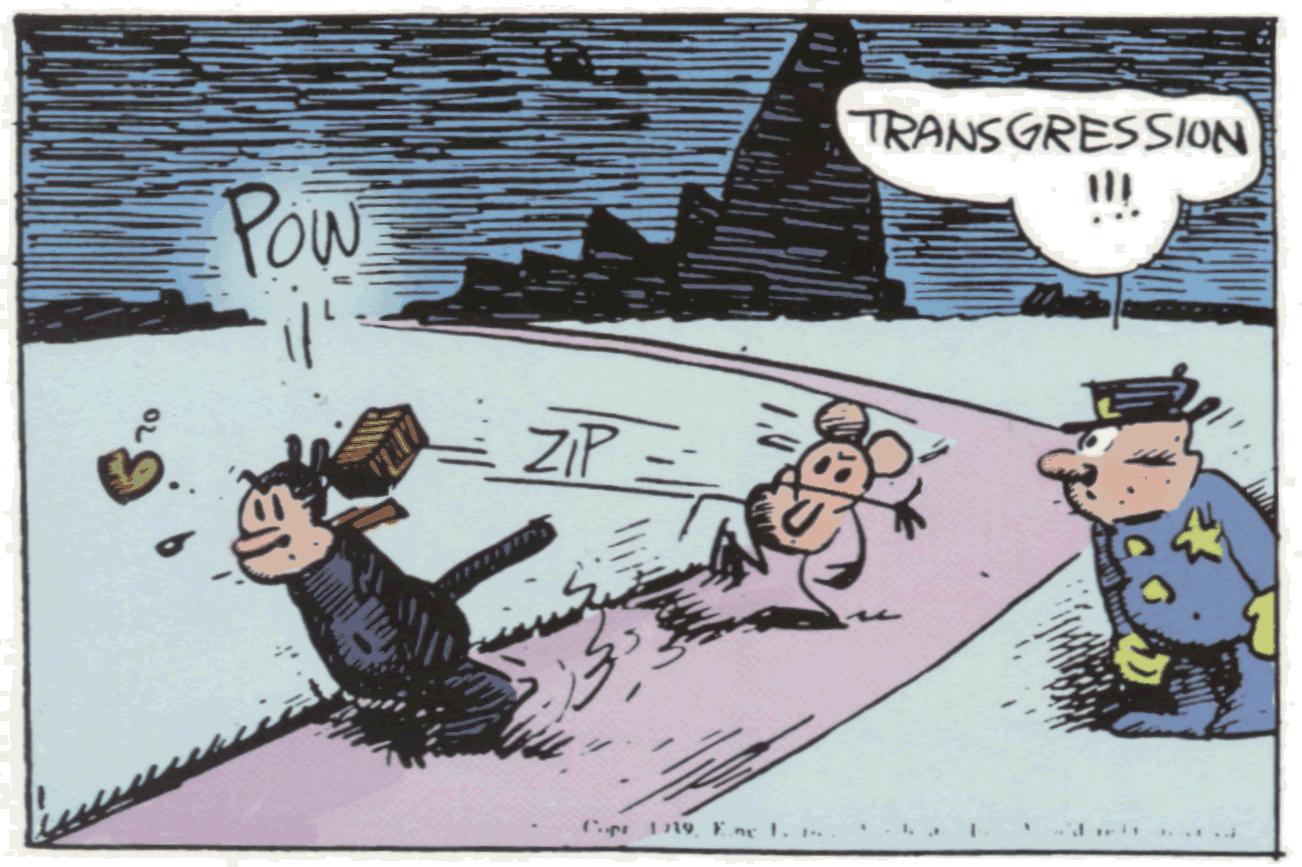
This is just the way life is, Herriman seems to be saying — no use trying to judge it or to fix it.
Perhaps unsurprisingly, the strip was never terribly popular. William Randolph Hearst admired it, though, considered it an adornment to his newspapers and insisted that they keep running it year after year. It was undoubtedly his greatest contribution to American culture.
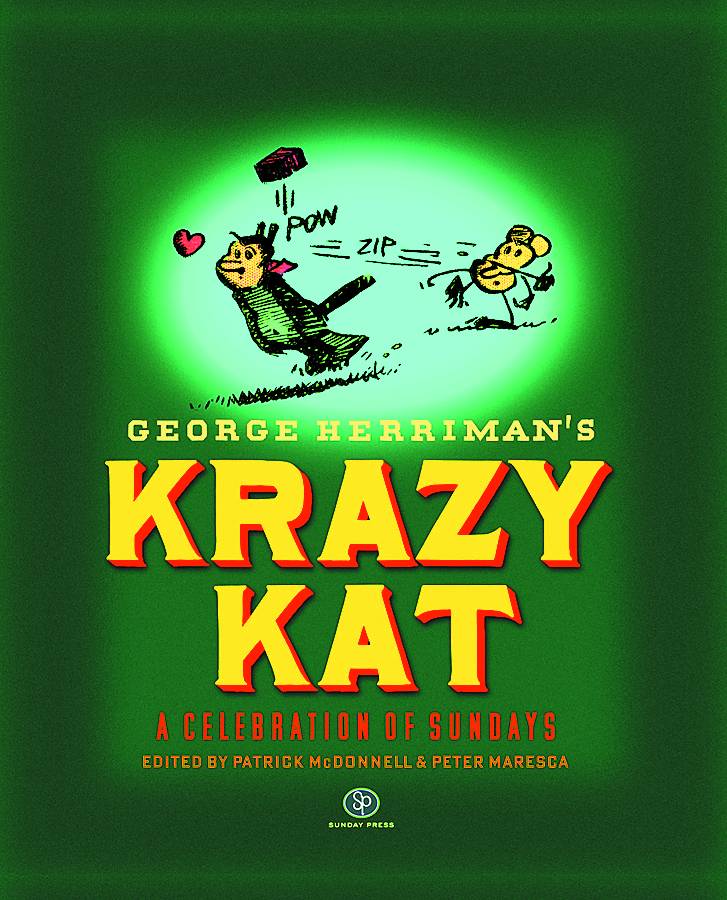
Fantagraphics Books has published the complete run of the full-page strips, in black and white, in multiple volumes, as well as a collection of the panoramic daily strips from the 1920s. Sunday Press has published a fabulous over-sized collection of the Sunday strips in color. They’re all worth owning and revisiting often.
Click on the images to enlarge.

